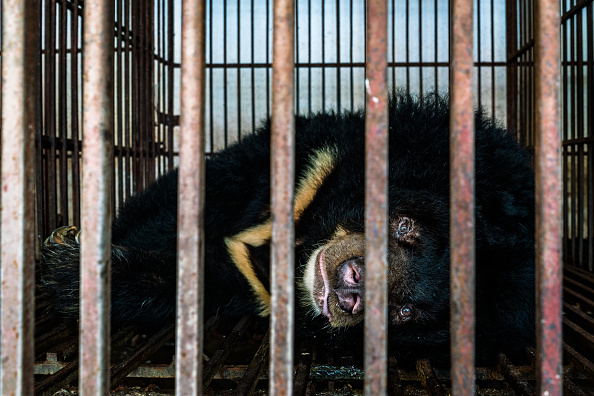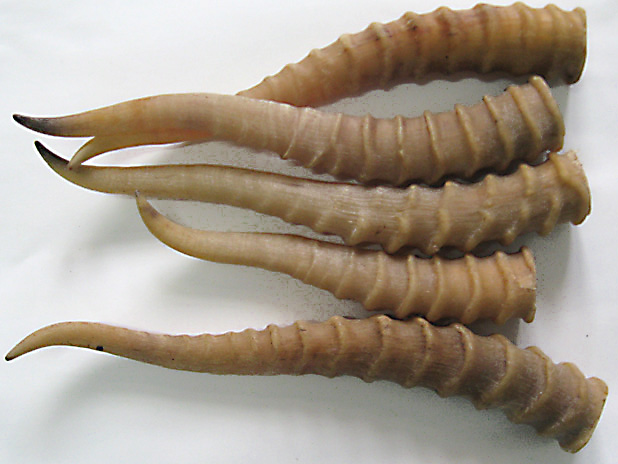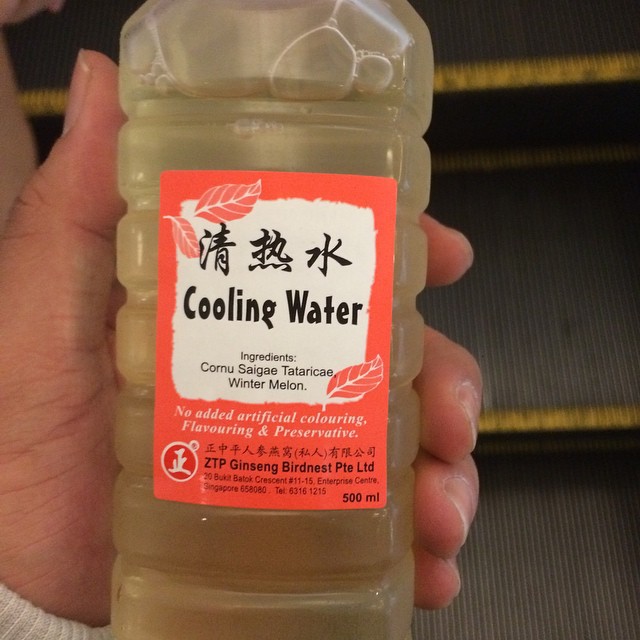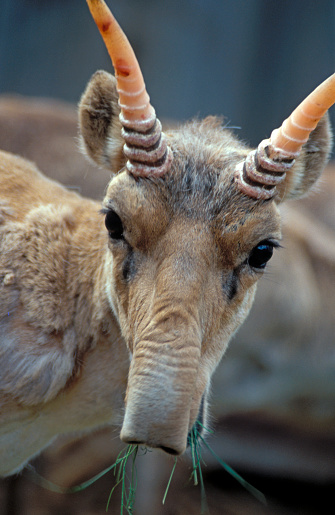When you were a kid, your parents may have convinced you to drink bottles of 'cooling water' to reduce "heatiness".
At least, you may have seen plenty of these drinks on sale at your neighbourhood Traditional Chinese Medicine (TCM) shop.
But did you know that these drinks are made using the parts of an endangered animal, the Saiga antelope?
A critically endangered species
Most people are familiar with rhino horns, bear bile and tiger bones being used in TCM.
Opponents of the illegal wildlife trade have lobbied for greater protection of the three charismatic species, whose parts are harvested for use in numerous TCM concoctions.
 A bear caged in a Vietnam bear bile farm. Image from GettyImages.
A bear caged in a Vietnam bear bile farm. Image from GettyImages.
Yet few are aware of the obscure Saiga antelope, and even fewer know that it is classified as critically endangered by the International Union of Conservation for Nature (IUCN) as of 2018.
The species, which looks like a weird cross between a goat and an elephant with its horns and bulbous snout, has been experiencing dramatic drops in population.
There are only a little more than 120,000 individuals left in the wild.
 Female Saiga antelopes have no horns. Image from GettyImages.
Female Saiga antelopes have no horns. Image from GettyImages.
This is due to both poaching for its horns in the TCM trade, and disease outbreaks.
Currently, the Saiga antelope can be found in parts of Central Asia, such as Mongolia and Russia.
But due to overhunting, they have been extinct in China since the 1960s.
Ling yang
Saiga horns are more commonly known as ling yang, or antelope horns.
Horns can be sold in four forms.
They can be sold whole, as shown below.
 Image from HerbalShop
Image from HerbalShop
However, they are most commonly sold as drinks, colloquially dubbed as the 'cooling water' that Chinese Singaporeans know well.
Sometimes, these drinks are labeled with the ingredients Cornu saigae tataricae.
Cornu refers to horn, and Saigae tartaricae is the species name of the Saiga antelope.
 Image from jadontan14 / Instagram
Image from jadontan14 / Instagram
Saiga horns are also sold as horn shavings or as capsules in medicinal halls and supermarkets.
The horns are commonly believed to be effective at treating "heatiness", reducing fevers, and detoxification.
However, doubts remain about the use of animal parts like Saiga and rhino horns in TCM treatments, as scientific evidence of their effectiveness is scant.
Lack of awareness among Chinese Singaporeans
A study carried out by researchers from the University of Oxford, the National University of Singapore and Nanyang Technological University found that one-fifth of the 2,200 Chinese Singaporean surveyed consume some form of Saiga horn product.
The study was conducted via consumer surveys, focus groups and interviews.
Many were even unaware of the source of ling yang, or how it was obtained.
A separate smaller survey in 2016 also found that 80 per cent of its 230 respondents did not know that the Saiga antelope is critically endangered.
Sale of horns legal, demand still strong
Despite the antelope's critically endangered status, the species is listed under Appendix II of the Convention on International Trade of Endangered Species of Wild Fauna and Flora (CITES).
This means that although illegal trade of Saiga antelopes is prohibited, traders are still able to trade the horns as long as they have a CITES permit issued by the country's authority—in this case, the Agri-Food and Veterinary Authority (AVA).
Demand for Saiga horns is still strong, and Singapore, along with Hong Kong and China, is one of the largest markets for the product.
New hope
Although the future of the Saiga antelope seems bleak, awareness of its plight is slowly increasing.
Conservation efforts by non-profits like World Wide Fund for Nature (WWF) brings hope for the survival of the species.
 Photo from GettyImages
Photo from GettyImages
If you wish to do your part, there are alternatives to Saiga horn 'cooling water', like chrysanthemum tea, barley water or honeysuckle.
Much more refreshing.
Top image from Imgur and jadontan14 / Instagram
If you like what you read, follow us on Facebook, Instagram, Twitter and Telegram to get the latest updates.
